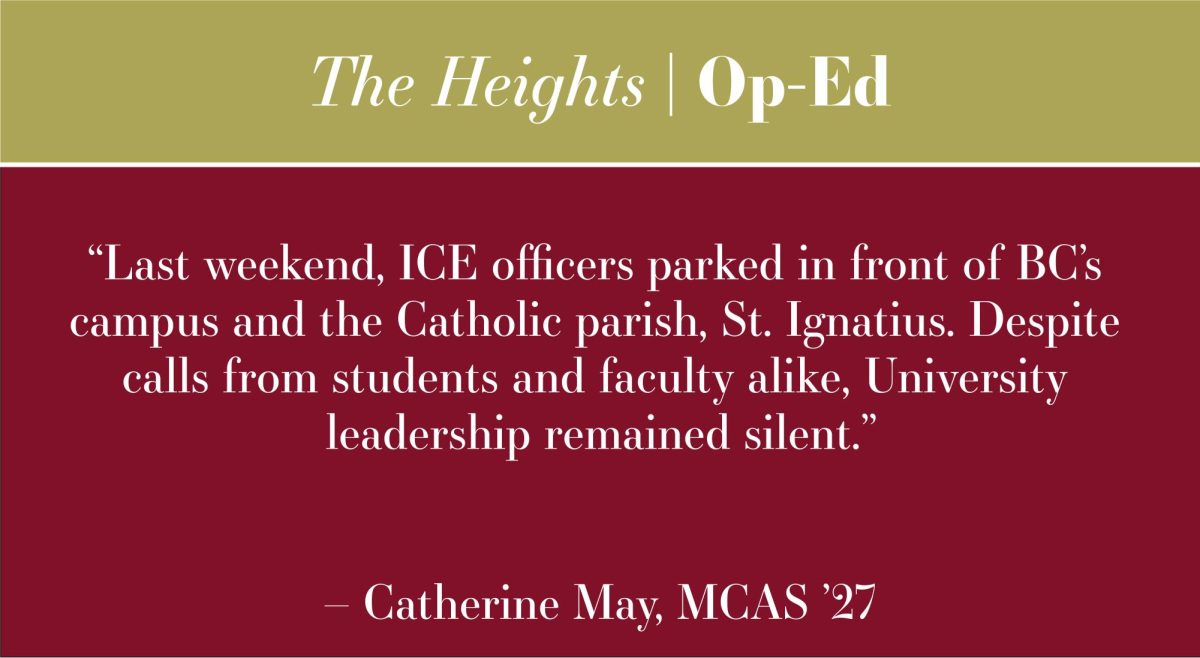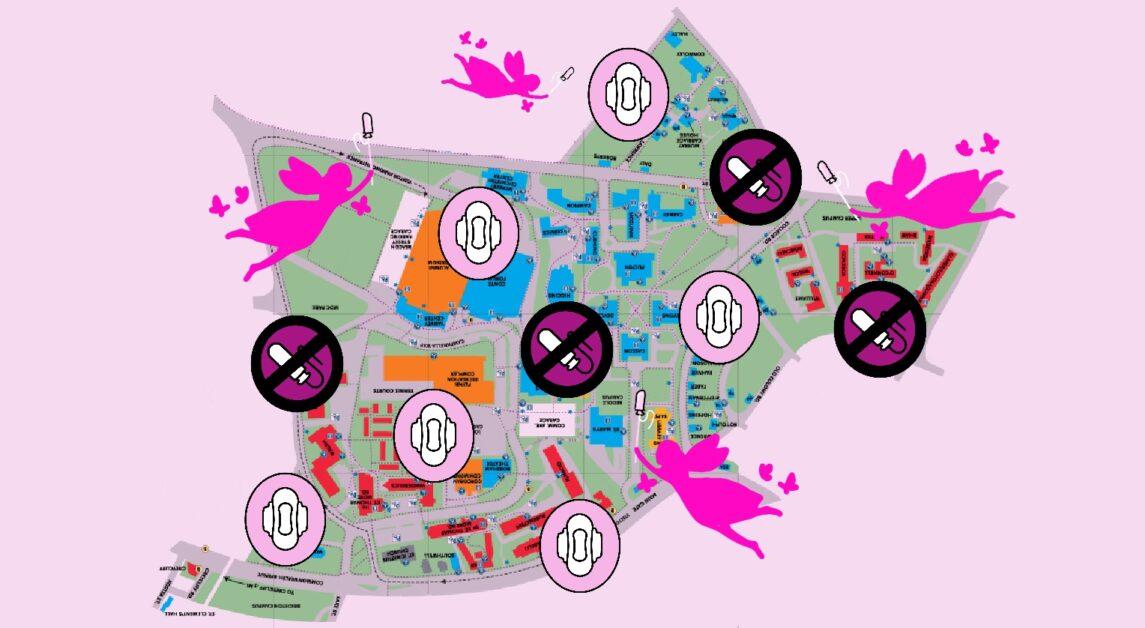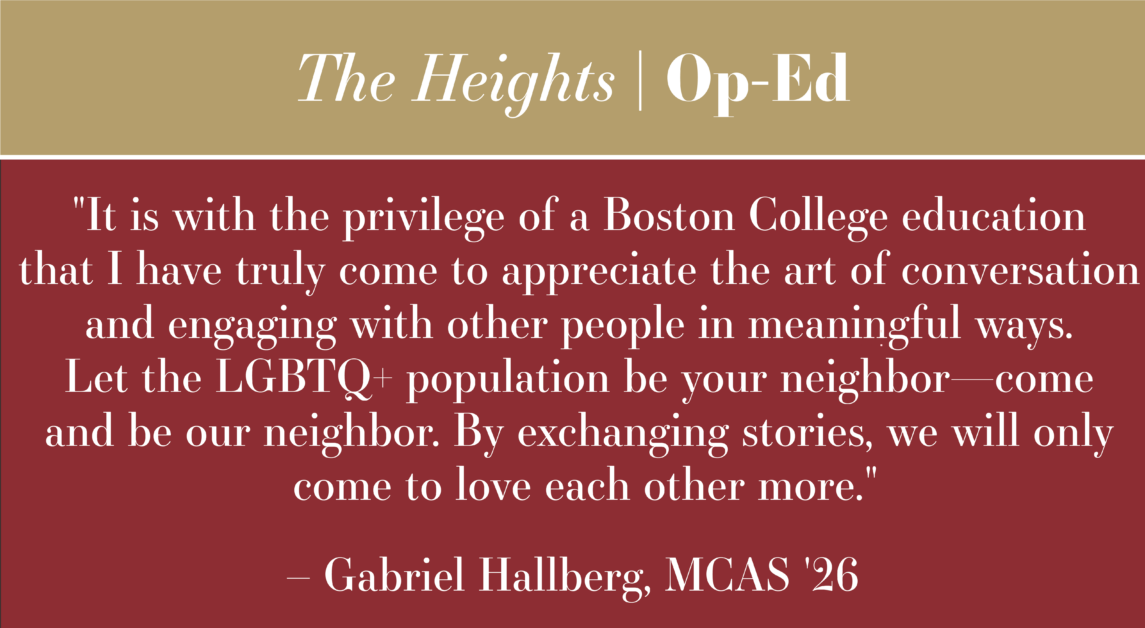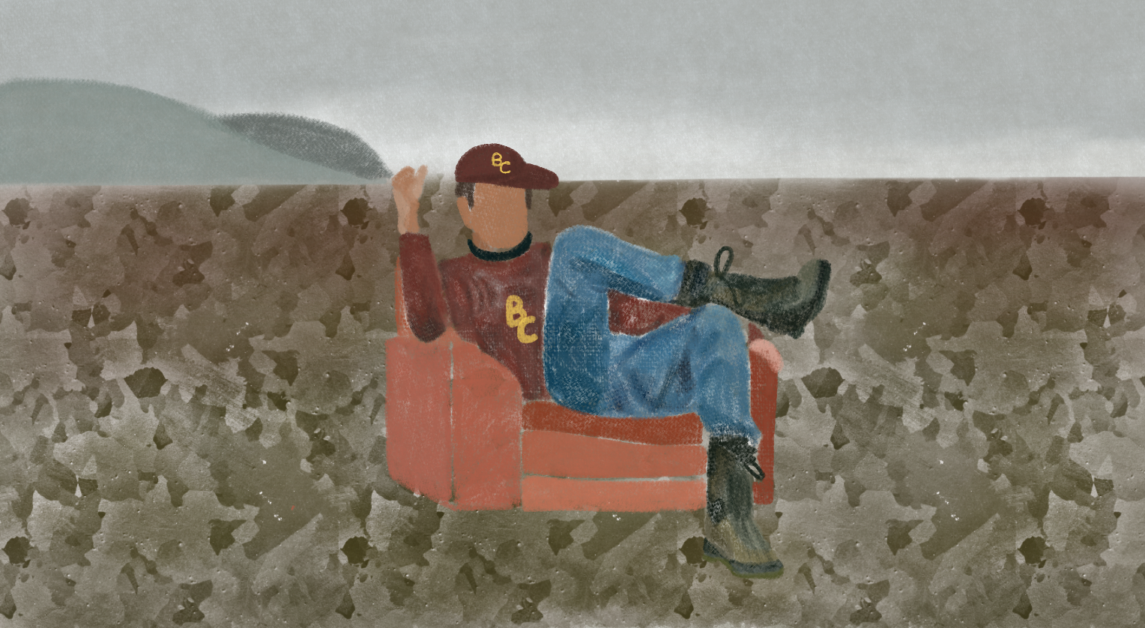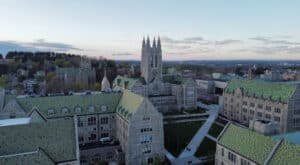The University has recently closed down the student art gallery in the basement of Bapst Library because it did not meet Massachusetts’ statutory requirement for handicap access.
This closure exacerbates an already problematic situation on campus-the limited amount of space available on campus for students to display their artistic creations. There are currently few other spaces in use-for instance, the first floor of O’Neill has a small space, equipped only with corkboards, but this space is not one actually designed for student art. There is also some space on the fourth floor of Devlin where the fine arts department resides, but this is both very limited and out of the way of most potential viewers. An additional problem with this space is the fire hazard that displaying artwork on the walls may present. The department is limited by fire code on how much can be put on the walls, and already uses the space for products of the many studio art classes that are offered. Occasionally, the libraries will show some student art in small display cases within seating areas, but these are not truly exhibitions. Additionally, it is not the responsibility of the Boston College libraries to provide the space on campus for all student art.
This lack of art space is not only problematic for student artists who wish to display their work, but also inconvenient and discouraging for the fine arts department. When trying to attract faculty-on both a temporary and a permanent basis-one concern is where projects can be shown. As it currently stands, there is no place outside of the department that can support such a display. This poses a problem for the department, making it more difficult to attract exceptional candidates, or to show off the work of visiting artists.
The administration agrees that art space on campus is an issue, and is holding a meeting soon to discuss the problem, according to Vice President for Planning and Assessment Kelli Armstrong. It is unclear, however, what exactly will be done to remedy the situation. Currently, the visual arts are only recognized at BC during Arts Fest-an enormously successful event. Its popularity is an indication that the student body is interested in the visual arts. As the Arts Council is responsible for advocating for all of the arts on campus-visual arts, dance, music, and theatre-it is easy for resources to be spread thin, especially since the fine arts department has only two tenured faculty to provide continuity to the advocacy. Additionally, the McMullen Museum has had impressive exhibits in the past few years and has clearly been a priority of the University, but the mission of the museum is inherently limited to traditional art. The administration needs to recognize more contemporary art and the art that is happening on BC’s campus, both of which could be done with the establishment of more gallery space on campus.
In the long term, the administration must rethink where the fine arts fit into BC. Many peer institutions have designated student art galleries on campus. With all of the new construction scheduled for the next 10 years, the University should consider how student gallery spaces can be incorporated into existing construction plans. More immediately, the administration should look for existing spaces in which student and faculty art can be made more visible. One possibility is to work student art into hallways in academic buildings, where there is plenty of space on the walls. In such a setting, more people would see the artwork than if it were cordoned off in a separate, designated space.
The Bapst Library is almost 90 years old, so it is understandable that there might be some structural constraints to retrofitting the space formerly used as a student art gallery to make it handicap accessible. With the closing of that space, it is imperative that the administration takes the opportunity to consider art space on campus and open up new locations to showcase the work of the many student artists at BC. Additionally, the administration should consider the needs of the fine arts department and provide them with a more centralized space for the display of the art of both faculty and students.




